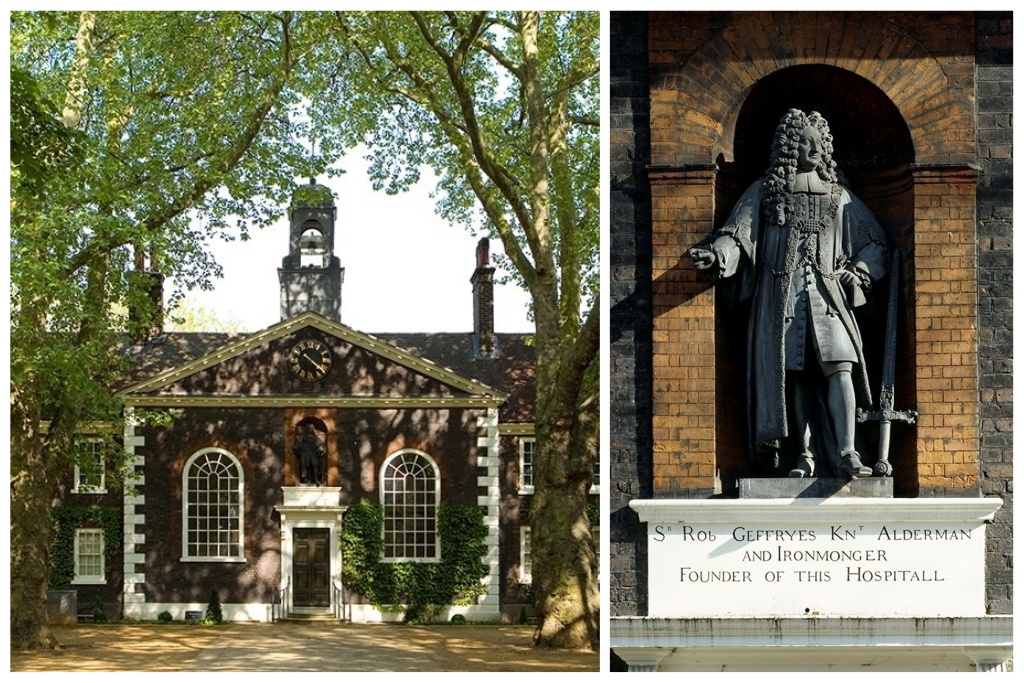Geffrye statue remains in place despite public wanting it removed

The Museum of the Home in London is to retain a statue of slave merchant Sir Robert Geffrye despite finding that most people wanted it removed. In a statement, the museum's board said it would "respond to the issues raised by this debate" and "reinterpret and contextualise the statue where it is" and plans to create greater diversity and representation at the Museum. The statement read:
‘Alongside many other cultural organisations across the UK, we have a responsibility to act against injustice, and this includes acknowledging the legacy of colonialism and slavery within our history.
The statue of Sir Robert Geffrye on our building is a symbol of the historic connection the Museum buildings have to an English merchant whose wealth was partly derived from the forced labour and trading of enslaved Africans. Geffrye donated the funds to build the almshouses in which the Museum is housed.
Following a process of reflection, debate and research, and a consultation conducted in partnership with Hackney Council, the Board of Trustees of the Museum has taken the decision not to remove the statue from the Museum’s buildings.
The Board takes the view that the Museum should respond to the issues raised by this debate by continuing with its vision of change at a fundamental level by making the Museum’s workforce, creative partners, content and programming more representative and inclusive.
The Board believes that the Museum should reinterpret and contextualise the statue where it is, to create a powerful platform for debate about the connection between the buildings and transatlantic slavery. The Museum has a responsibility to reflect and debate history accurately, and in doing so to confront, challenge and learn from the uncomfortable truths of the origins of the Museum buildings.
As the Museum of the Home – a place to reveal and rethink the ways we live in order to live better together – we will also be addressing, in our galleries and programming, the connections between the British home and exploitative trade, value systems and physical objects, both historically and today.
Many people took time to share their views in the public consultation. Overall, the response was in favour of removing the statue. However, feedback showed that what to do with the statue is a complex debate, full of nuance and different opinions. On balance the Board has taken the view that the important issues raised should be addressed through ongoing structural and cultural change, along with better interpretation and conversation around the statue.
We acknowledge the pain caused by the connections between the Museum buildings and the forced labour and trading of enslaved Africans. The Black Lives Matter movement has demonstrated a profound need for people and institutions to educate themselves about the legacy of structural racism and colonialism. We are committed to reflecting this at the Museum when we reopen as a place to explore the many meanings of home.
It is difficult to capture all voices in an open consultation. In future we want to work with all our communities to fulfil the Museum’s vision to create a diverse and dynamic cultural offer around home.
We are committed to continuing to develop our programming and policies on anti-racism and equity, both in terms of curation and the Museum’s own staff, board and creative partners.’
About The Museum of the Home and Sir Robert Geffrye
The Museum of the Home, formerly the Geffrye Museum of the Home, is housed in almshouses built in 1714. The money to build the almshouses came from Sir Robert Geffrye (1613–1704). The buildings were sold to the London County Council in 1911, who opened the then Geffrye Museum in 1914. The Museum became an independent charitable trust in 1991. There is no connection between Sir Robert Geffrye and the Museum’s collections and programmes.
Sir Robert Geffrye was an English merchant, who made part of his money from his involvement in the exploitative East India Company and Royal African Company and his investment in the forced labour and trading of enslaved people. He part-owned a slave ship called the China Merchant. He profited directly from the buying and selling of human beings. These profits were very likely sufficient to fund the core part of his legacy.
The current statue of Sir Robert Geffrye is a replica installed on the almshouse buildings to replace the original which was removed in 1912 when the Ironmongers’ Company sold the almshouses to the London County Council.
Sonia Solicari, Director of the museum, said "we know that for many the statue of Robert Geffrye on our building represents abuse, oppression and the history of thousands of enslaved people torn from their homes and families and forced to work in appalling conditions."
She took part in a DCMS Select Committee on 6 October 2020 examining decision-making around physical heritage with Marvin Rees, Mayor of Bristol, and specialist conservation architect Elsie Owusu OBE.
Digital, Culture, Media and Sport Committee hearing
Tuesday 6 October 2020 Meeting started at 10.01am, ended 12.16pm
https://www.parliamentlive.tv/Event/Index/a51ca073-78e6-4252-8b9d-0c5d1f890f18
Geffrye, his statue and its future
https://www.museumofthehome.org.uk/what-we-do/our-story/the-statue-of-sir-robert-geffrye/




